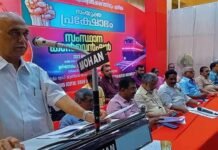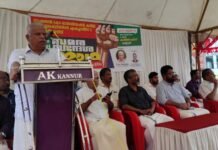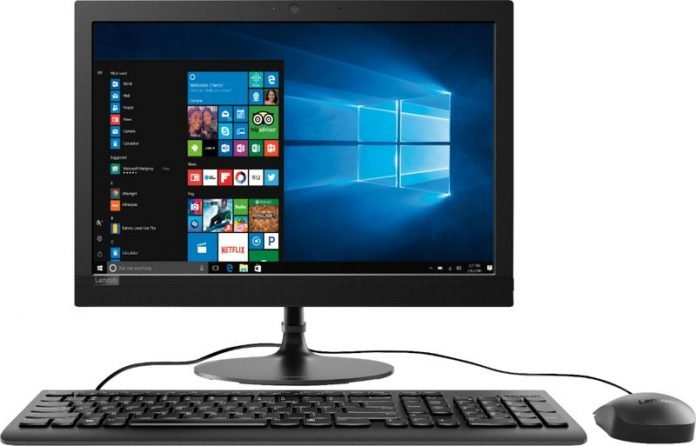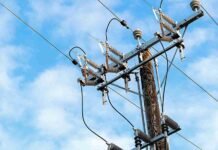Dr. K.P. MAMMOOTTY, Director, LBS Centre for Science & Technology , Trivandrum,(Paper presented at the inaugural function of ‘Computer and Power System Study Centre’ of KSEB Officers Association)
The mechanisation was basically responsible for the first industrial revolution. The second industrial revolution is the brain child of automation and computerisation. The mechanisation helped man to amplify his physical power many fold, whereas the computerisation has multiplied his intellectual capacity more than thousand times.�
Just as the growth of electronics from simple vacuum tube to the complicated VLSI and microprocessor is one of the greatest marvels of this century, the development of computer from its first to fifth generation (KIPS) is really astounding.
The computer has the following capabilities.
- Completion of complex jobs with great speed.
- Capacity to make decision.
- Work without fatigue.
- Simultaneous execution of different jobs.
- Precision and accuracy in results.
- Very large memory provision to store and to retrieve data.
- More effective utilisation of human efforts, thus reducing cost of production.
- Remote control.
- Capacity to work in inaccessible areas.
There is hardly any human activity which is not affected by the Computer in some way or other, be it industrial management and production, health, education, agriculture, defense, crime detection, communication or travel. Naturally, the social and economic implication of computerisation is too conspicuous for any realist to see.
{dybanners}2,0{/dybanners}
At the turn of this century, every worker had to put in 60 hours of work per week. This had been later reduced to 40 to 36 man hours per week. In many places 6-day working week has been reduced to 5-day week. This is the immediate effect of computerisation. Man is saved from lot of drudgery. Production becomes more economical. Therefore, for less work, the employees get more wages. If men could earn more as a result of computerisation, the women could have a better peace of mind and manage household chores with more confidence. The workers can afford to enjoy more free time. Free time gives them ample scope for intellectual exercises like literary, cultural and social activities. This does not mean retrenchment or unemployment.
The history of the growth of Bell Telephone, the worlds’ biggest firm manufacturing telecommunication equipments, among other things, is a speaking example. Some years ago, the Bell Telephone management took a decision to computerise their production. Fearing unemployment, the employees opposed the move. The management assured them no retrenchment and launched the programme. Adopting CAD/CAM, they made innovations in their production. New components for more efficient communication came into the market to meet the sudden spurt of demand, the company had to expand its activities. Consequently, the existing employees got more promotion avenues and new hands had to be recruited to share the growing work load.
These are the days people are conscious of high sophistication. Accuracy, precision, credibility and availability of products in sufficient quantity at the right time are the vital factors which ensure industrial success. Without computers, these are unattainable in this age of stiff competition both in the domestic and foreign markets.
It is not enough that we produce only for internal consumption. We should export our products. This calls for international standard. Precision at the order of a micron can be achieved only with the aid of computers. When we capture world markets through quality products, our industry grows and with it, the employment facilities expand and we achieve economic prosperity.
COMPUTER AND COMMUNICATION
Communication is as vital as labour and capital for modern industrial growth. Justice Louis Joinet said “Information is power and economic information is economic power”. Transmission of information is called communication. Instant communication is so vital for an industrial establishment having branches in different parts of the world. Continuous assessment of the performance of various branches from a central station helps the management to make economic, marketing and business decisions at the right time. Computer communication, through its local Area Network (LAN) Wide Area Network (WAN) and Integrated Services Digital Network (ISDN) can connect urban cities, and villages.
Different countries are brought together through computer network and geostationary satellites. The communications speeds have crossed 16 million bits per second (Mbps). In a modern industrial Scenario where patience is not considered a virtue, this much speed of data transmission is most essential. Through computerised communication we do not transmit Morse codes nor any short hand, but the whole files in its readable form. Pictures and drawings also can be transmitted as such. Digital telephone systems, satellites, car phones, teleconferences, voice mail boxes and electronic mail systems are the end products of computerised communication systems. We have now mobile offices. These facilities are of great help not only for industrial growth but also for day-today administration. Peoples’ grievances are heard in time and the project implementations are readily monitored. Thus the Computer acts as a veritable tool for Social change.
Most of the organisations under Public sector undertakings have computers for local operation such as salary, inventory control, administration and process management. If only there is a system of communication between these industries as far as data distribution and enquiries are concerned, the effective planning and implementation of Government policies would take place. Timely action would avoid a lot of wastages and costly delays.
FOOD AND AGRICULTURE
Food and agriculture need an integrated approach to several input factors. It is very necessary to have a database of common interest for storage and retrieval to provide:
1. Soil and its characteristics
2. Fertilizer availability and distribution
3. Water resources
4. Meteorological characteristics all year
5. Crop pattern
6. Live stock and its mobilisation
7. Grain collection and distribution.
HEALTH
In the medical field, the use of computer has come as a boon. In a computerised Medicare system, chances of human error are minimised or completely eliminated. Pathological tests, scanning and continuous monitoring of body conditions of a patient being operated are done through computerised testing and surgical equipments. The storage of patient data makes future diagnosis more easy. The disease data are made available for research and analysis. Using computer, the best medicine available for a particular disease and its availability can be ascertained. If hospitals are connected through LAN and WAN, communication between hospitals can be made easy and for emergency, the best source can be tapped and precious lives can be saved.
Through such a Medicare system, a healthy population emerge. They live longer and happier.
EDUCATION
Education is an instrument of change for any society. With the introduction of computer, the education assumes new dimensions and values. A new language and a new grammar befitting a computer culture have become operational. In the past, more importance had been given to subjects like history, literature, and culture. These subjects are highly essential and expose students to factors like the origin, the growth and the survival of humanity. Nevertheless, the employers who engage people for manning business, industry, construction and marketing expect something more than just the knowledge in human history and culture. The educational system should adopt itself to changing needs. Schools and colleges which do not rise to the occasion would produce worthless citizens, who become a drag on society. Mental weakness is more dangerous than the physical disability.
Fortunately our educational system is ready to accept changes that may come due to exposure to computers. Mathematics is the branch of knowledge which has undergone a great change. A few years back calculus was taught only in higher secondary stages. It has now become a fundamental subject in upper primary classes. Set theory and Bulcan algebra are taught now in lower classes. This is to attune new generation to a computer environment.
For teaching new subjects, we should train teachers and produce new books. In high technology area, the life of a book is less than five years. Therefore, depending upon the old system of printing will produce only obsolete materials.
In producing high school and University books, the Computer helps in two ways.
1. Books being produced would contain up-to-date information.
2. Computer aided printing speeds up production
Audio visual aids. Video tape, closed circuit TV and Satellite transmission are widely used for dissemination of ideas and information. In the distant education system, the computer network has wide application.
Some of the effluent educational institutions in India have either large main frame computers or mini/micro computers. These institutions of higher learning and facilities for computer education are concentrated in urban areas. This leads to mass migration of students and their families to urban areas, creating a tough competition for admission in the colleges there.
This problem could be solved through “distant teaching” via Satellite cum terrestrial network to various colleges in that area surrounding the city. With satellite broadcasting, distance is immaterial. The network would also facilitate the use of computers by students without any need to travel long distances to get to the actual centre located at a far off urban area.
For the last five years India had been experimenting this idea, linking distant computers through mobile Satellite earth stations. Now there is a need for permanent network for educational purposes. Such a network will provide a new training/teaching option which will be more economical and effective than any other means. It will transform the quantity and quality of outreach, consultation and other services which the universities and colleges in urban areas can provide. Links between universities themselves will aid in having uniform standards in education in a big country like India and also help in inter-university administration.
COMPUTER AND ENERGY CONSERVATION
A large electric power system consists of a number of generators, transmission and distribution lines spread over a big area. Generators may be hydroelectric, thermal, or nuclear. All of them are not identical. Their optimum operating conditions are different. There may be alternate paths in a grid system through which the power can be transmitted with minimum loss. In a vast country like India it is well neigh impossible to leave such a complicated work purely to human control.
The automatic load despatching control is entrusted to the computer. The level of generation for each generator and the transmission route for most economical load despatch are determined by the Computer So much that the wastage is minimised, ensuring energy conservation. Another application of the computer in power system is in protection and fault monitoring.
COMPUTER FOR MACHINE AND PROCESS CONTROL
Programmable controllers are used for automatic control of machines and machine tools. The computerised auto pilots take the control of airplanes when they are in the air. Lathes, and milling machines operate with computer aid giving the required accuracy and precision.
In chemical factories, the rate of How of chemicals, their concentration, pressure and temperature are to be accurately controlled for obtaining quality products. These controls are also achieved by means of computers. Computers are widely used in oil refineries.
RESEARCH AND DEVELOPMENT
The Research is backbone of survival of a Scientific community and of a nation. Mathematics is the mother of all sciences. Any natural phenomena could be expressed mathematically. When human ingenuity grew, he could probe into secrets of nature at more and more depths. Higher order mathematical equations were developed to explain such phenomena. But solutions were not easy to find.
Computer stepped in when the research was at a dead lock due to lack of tools to solve higher order mathematical equations. A set of equation which a mathematician could solve only in his life time, the computer could solve in a split second. This blew up the hurdle and opened new vistas of hope and development for humanity. Today most of high precision research equipments need computer for analysis and solution.
There are more than 100 R&D laboratories in the country in various areas of discipline. Invariably all these organisations have computer facility. Data bases pertaining to many disciplines have already been created at these places. If they agree to share the benefits of data through inter-organizational computer network, a lot of unwanted and time consuming duplications could have been avoided.
The space research has led to invention of several new materials and communication systems which strongly influenced the quality of human life on earth. We cannot think of space exploration without computers.
OTHER FIELDS
I have just touched on some of the factors to show social and economic implications of computerisation. There are other fields like defense, crime detection, weather forecast Geological and Oceanographic investigations which have direct impact on social and economic function of society.
Leaving border Surveillance to Computer aided equipments, we will be able to sleep in peace. Radar, anti air craft guns, guided missiles and many other equipments are automatic in operation which respond to environment including enemy’s attempt to attack. When some miscreants left the shores of Ceylon in boats to invade Malee, a few months ago, it was seen from Pentagon Office in Washington thousands of Kilometers away and the neighbouring countries were alerted. This was made possible because of the action of computerised equipments.
Using Super Computers and INSAT we are in a position to forecast Weather correctly which is of great use for farmers. Natural calamities can be predicted and remedial measures can be taken to minimise the damage being done.
Mineral and oil deposits underground and in deep sea bed can be detected through satellite photos using laser beams.



















